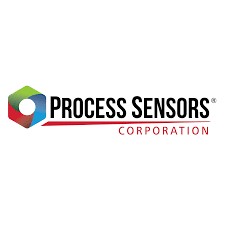In 2021, IEP accused KPM of federal and common law trademark infringement and unfair competition and violation of c. 93A in connection with alleged infringement of IEP’s “hexagonal shape” trademarks (one colorized, one claiming no particular colors) for explosion containment equipment and explosion detection equipment:

KPM selected a new logo in 2017 that includes a similar, but not identical, hexagonal logo:

After discovery closed, KMP moved for summary judgment, and IEP in response cross-moved for its own summary judgment, relying in part on expert testimony. KMP then moved to exclude IEP’s proposed expert testimony. As an initial note, Judge Kobick rejected KMP’s argument that IEP failed to comply with Local Rule 56.1, which requires a concise statement of material facts that are (a) not in dispute (when moving for summary judgment) or (b) that are in dispute (when opposing summary judgment). After KMP moved for summary judgment, IEP opposed and cross-moved for its own summary judgment, and filed a single document both contesting KMP’s facts and asserting its own allegedly undisputed facts. Judge Kobick found this to be sufficient. She further found KMP’s failure to oppose IEP’s statement of facts to be excused because KMP adequately opposed relevant IEP facts in its opposition.
IEP sought to introduce testimony from an expert on KMP’s use of its hexagonal mark. Judge Koblick refused to exclude the testimony on the basis of the expert not having conducted a consumer survey, noting that while survey evidence is usually employed by an expert in a trademark case, First Circuit law does not require survey evidence to establish a likelihood of confusion. Further, the expert was not testifying on the ultimate conclusion of likelihood of confusion, but only on certain of the Pignons factors that the Court was to consider in reaching a determination. She further found that the proposed expert was competent to testify based on his two decades of experience with hundreds of companies in the same field. She did, however, determine that the expert should be excluded because his proposed testimony did not rest on a reliable foundation with respect to several Pignons factors, namely, evidence of actual customer confusion and KMP’s intent in adopting its mark. She found that his report disclosed no basis for opining on these factors and that the portions that did so were entirely speculative. She struck those parts of his reports and precluded his testimony on those topics at trial.
Judge Kobick rejected KMP’s standing argument. KMP asserted that IEP lacked standing to assert the colorized version of the mark because that registration was owned by a corporate parent of IEP rather than IEP itself. Judge Kobick pointed out that IEP’s registration to the hexagonal mark with no particular color scheme would cover the colored mark, and noted that KMP had not offered any statutory or case law saying that a mark couldn’t be owned and asserted by either of a parent-subsidiary corporation.
In terms of the competing summary judgment motions, Judge Kobick noted that the parties used the hexagonal marks to sell products, directly or through distributors, to consumers in the powder and bulk processing industries, and that they share at least 48 common customers. She found the respective marks to be “strikingly similar,” notwithstanding the additional language that typically accompanied the respective marks. The colored hexagonal design was the dominant feature of the marks, and that the addition of suggestive or descriptive elements to the dominant part of the mark is generally insufficient to avoid confusion. There was sufficient overlap of the types of goods sold that a jury could reasonably find confusion. The channels of sales weighed in favor of confusion, as both sold through distributors – that they did not utilize the same distributors was deemed insignificant, as entities can shift distributors over time. The channels of advertising was also deemed to favor IEP, although only slightly. Both parties had appeared at the same trade show, and each advertised on social media and the internet (although Judge Kobick noted that advertising on the internet was effectively neutral at this point in time, as everybody advertises on the internet). It was not clear on the undisputed facts, however, whether they sold to the same type of purchasers. IEP suggested that unsophisticated administrative personnel might purchase either product, thinking IEP to be the source, but KMP argued that the typical purchase occurs only after days or weeks of site visits and discussions with staff, which would serve to dispel any confusion. Actual confusion, which may be the most persuasive evidence, weighed heavily in favor of KMP, as the parties’ marks had coexisted for more than six years with no evidence of actual customer confusion being presented. IEP further provided no evidence that KMP selected its mark in order to cause confusion or to exploit IEP’s existing marl – the evidence lacked any suggestion that KMP or its graphic designer was aware of IEP’s mark when the KMP hexagonal mark was designed. Strength of the mark was deemed to favor IEP, but only marginally. IEP had used the mark for more than ten years, and for more than four years prior to KMP’s introduction of its mark, but had provided no other evidence of the mark’s strength in the industry or of its efforts to promote the mark. Weighing all of the factors, Judge Kobick found that the jury could reasonably find either way, making likelihood of confusion a factual question for either party. As all the other claims depended on a likelihood of confusion, she denied summary judgment to both parties.
By submitting this form, you are consenting to receive marketing emails from: Lando & Anastasi, LLP, 60 State Street, 23rd Floor, Boston, MA, 02109, http://www.lalaw.com. You can revoke your consent to receive emails at any time by using the SafeUnsubscribe® link, found at the bottom of every email. Emails are serviced by Constant Contact
SHARE THIS POST

